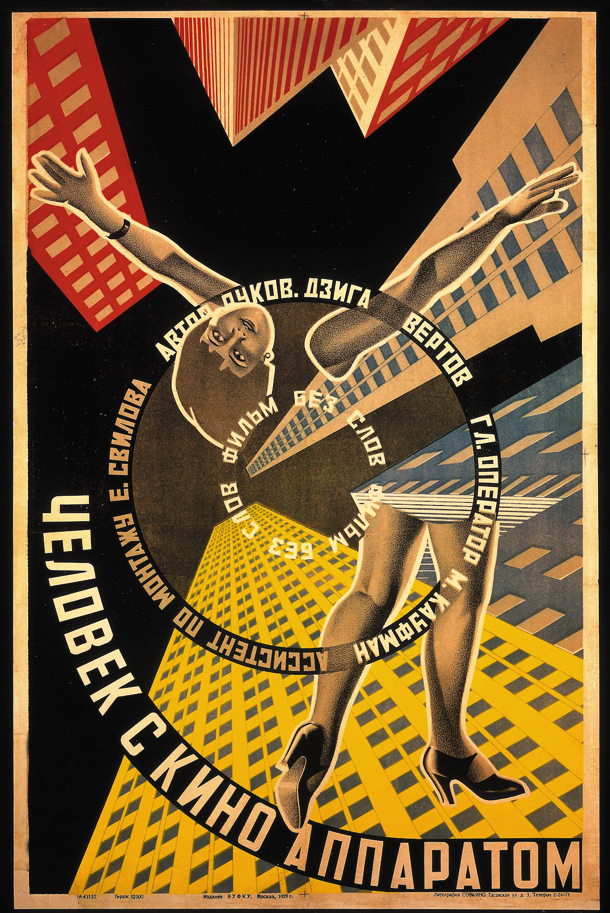
Of all the cinematic trailblazers to emerge during the early years of the Soviet Union – Sergei Eisenstein, Vsevolod Pudovkin, Lev Kuleshov – Dziga Vertov (né Denis Arkadievitch Kaufman, 1896–1954) was the most radical.
Whereas Eisenstein – as seen in that film school standard Battleship Potemkin – used montage editing to create new ways of telling a story, Vertov dispensed with story altogether. He loathed fiction films. “The film drama is the Opium of the people,” he wrote. “Down with Bourgeois fairy-tale scenarios…long live life as it is!” He called for the creation of a new kind of cinema free of the counter-revolutionary baggage of Western movies. A cinema that captured real life.
At the beginning of his masterpiece, A Man with a Movie Camera (1929) – which was named in 2012 by Sight and Sound magazine as the 8th best movie ever made – Vertov announced exactly what that kind of cinema would look like:
This film is an experiment in cinematic communication of real events without the help of intertitles, without the help of a story, without the help of theatre. This experimental work aims at creating a truly international language of cinema based on its absolute separation from the language of theatre and literature.
Gleefully using jump cuts, superimpositions, split screens and every other trick in a filmmaker’s arsenal, Vertov, along with his editor (and wife) Elizaveta Svilova, crafts a dizzying, impressionistic, propulsive portrait of the newly industrializing Soviet Union. The lengths to which Vertov goes to capture this “cinematic communication of real events” are startling: His camera soars over cities and gazes up at streetcars; it films machines chugging away and even records a woman giving birth. “I am eye. I am a mechanical eye,” Vertov once famously wrote. “I, a machine, am showing you a world, the likes of which only I can see.”
Yet Vertov’s stroke of genius was to expose the entire artifice of filmmaking within the movie itself. In A Man with a Movie Camera, Vertov shoots footage of his cameramen shooting footage. There’s a recurring shot of an eye staring through a lens. We see images from earlier in the movie getting edited into the film. This sort of cinematic self-reflexivity was decades ahead of its time, influencing such future experimental filmmakers as Chris Marker, Stan Brakhage and especially Jean-Luc Godard who in 1968 formed a radical filmmaking collective called The Dziga Vertov Group.
A Man with a Movie Camera is nothing short of exhilarating. Check it out above.
Note: An earlier version of this post appeared on our site in November 2014.
Jonathan Crow is a writer and filmmaker whose work has appeared in Yahoo!, The Hollywood Reporter, and other publications.
Related Content:
Watch Dziga Vertov’s Soviet Toys: The First Soviet Animated Movie Ever (1924)
Eight Free Films by Dziga Vertov, Creator of Soviet Avant-Garde Documentaries
Jonathan Crow is a Los Angeles-based writer and filmmaker whose work has appeared in Yahoo!, The Hollywood Reporter, and other publications. You can follow him at @jonccrow.


The quality of the ‘print’ linked above is not great. There are some HD versions available, like: https://www.youtube.com/watch?v=BtTlgxtoqhg